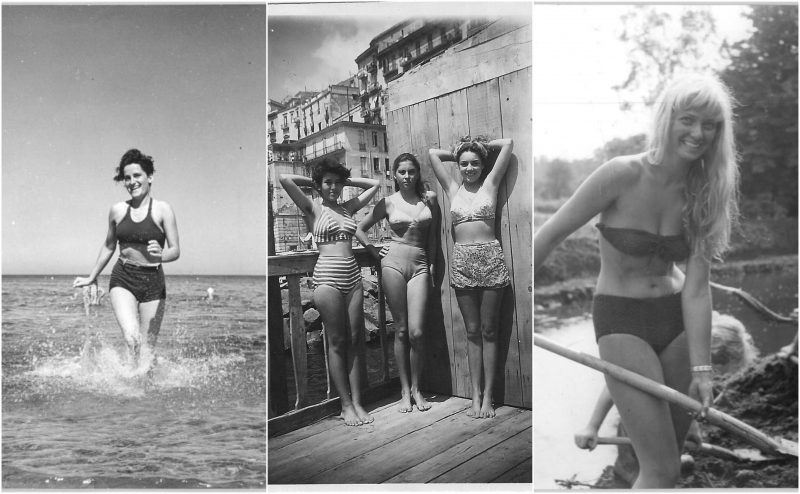Swimwear of the 1940s, 50s and early 60s followed the silhouette mostly from early 1930s.
Keeping in line with the ultra-feminine look dominated by Dior, it evolved into a dress with cinched waists and constructed bustlines, accessorized with earrings, bracelets, hats, scarves, sunglasses, hand bags and cover-ups.
Many of these pre-bikinis had fancy names like Double Entendre, Honey Child (to maximize small bosoms), Shipshape (to minimize large bosoms), Diamond Lil (trimmed with rhinestones and lace), Swimming In Mink (trimmed with fur across the bodice) and Spearfisherman (heavy poplin with a rope belt for carrying a knife), Beau Catcher, Leading Lady, Pretty Foxy, Side Issue, Forecast, and Fabulous Fit. According to Vogue the swimwear had become more of “state of dress, not undress” by mid-1950s.
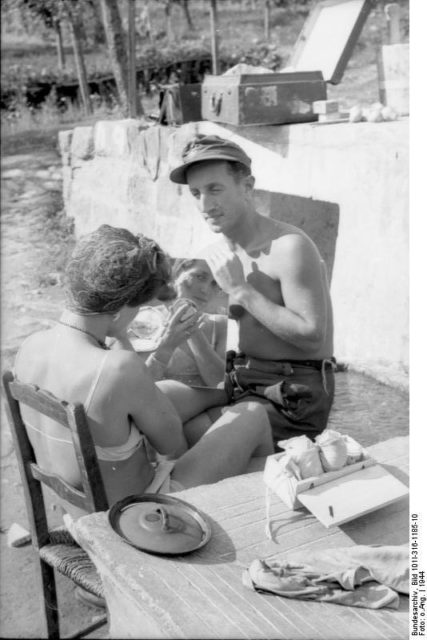
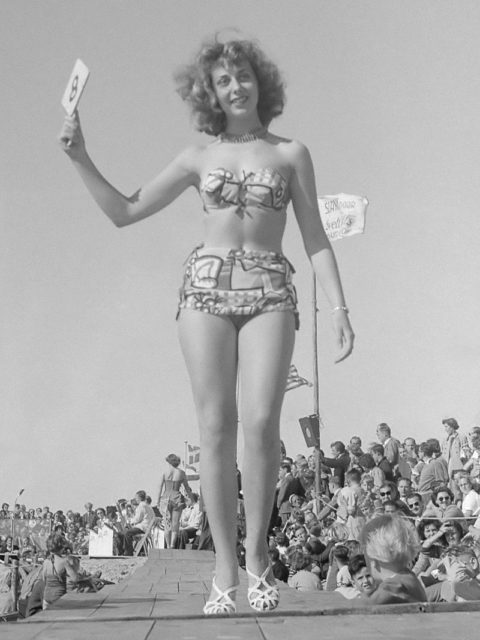
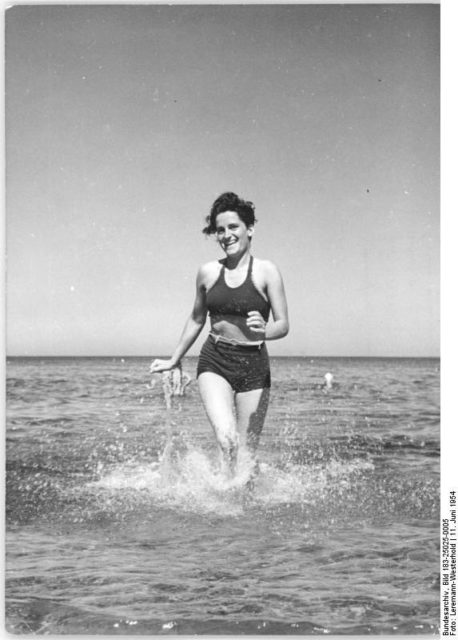
The first bikinis appeared just after World War II. Early examples were not very different from the women’s two pieces common since the 1920s, except that they had a gap below the breast line allowing for a section of bare midriff. They were named after Bikini Atoll, the site of several nuclear weapons tests, for their supposed explosive effect on the viewer.
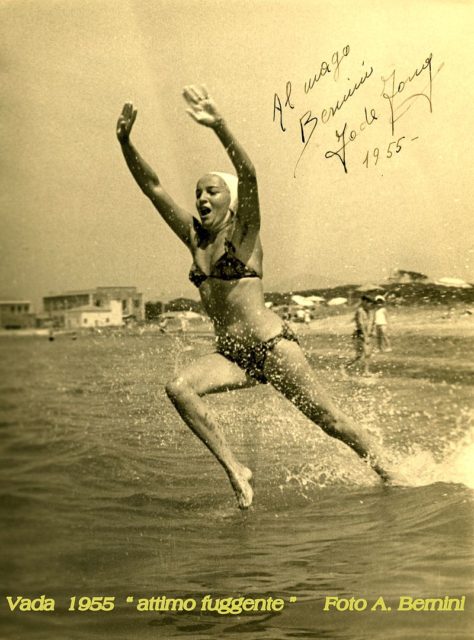
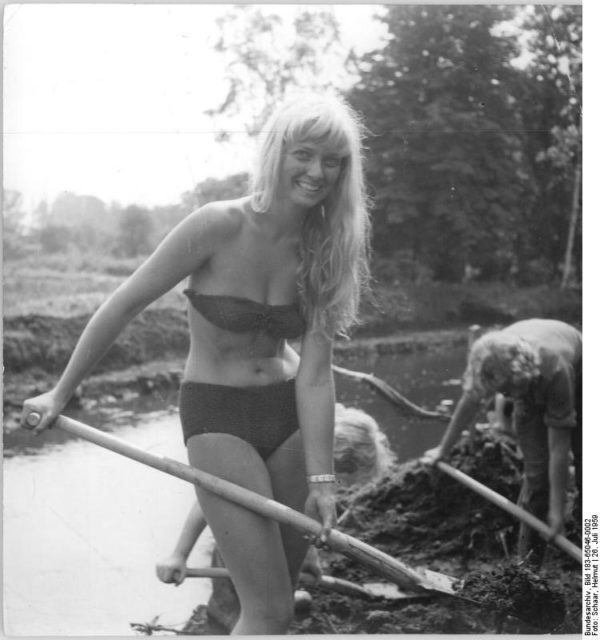
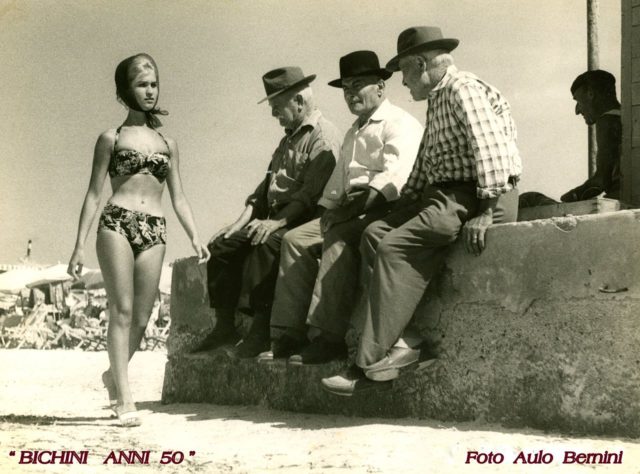
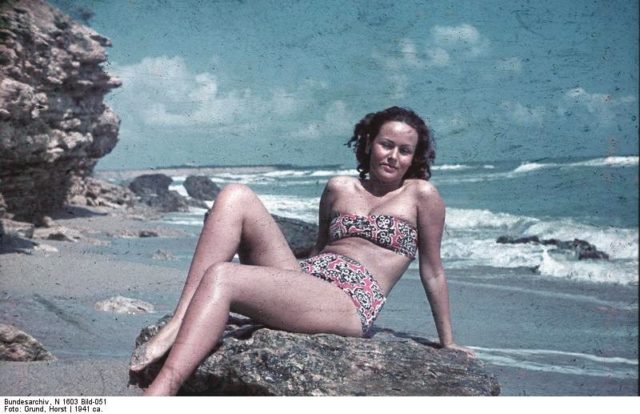
Through the 1950s, it was thought proper for the lower part of the bikini to come up high enough to cover the navel. From the 1960s on, the bikini shrank in all directions until it sometimes covered little more than the nipples and genitalia, although less revealing models giving more support to the breasts remained popular. At the same time, fashion designer Rudi Gernreich introduced the monokini, a topless suit for women consisting of a modest bottom supported by two thin straps. Although not a commercial success, the suit opened eyes to new design possibilities.
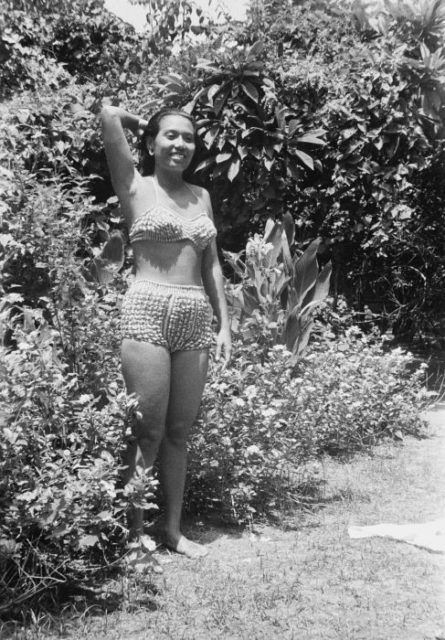
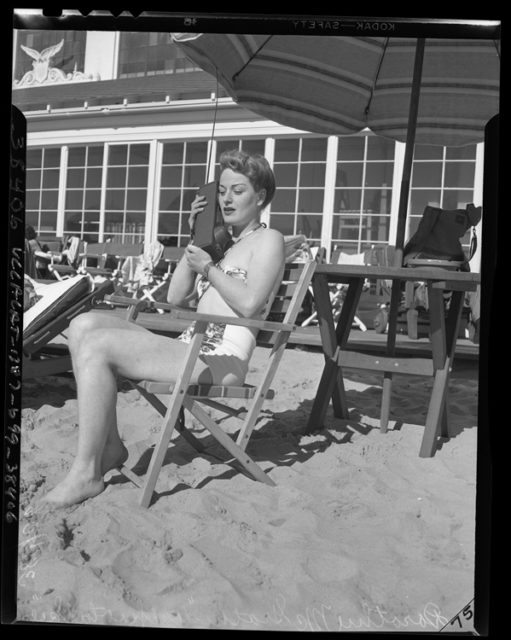
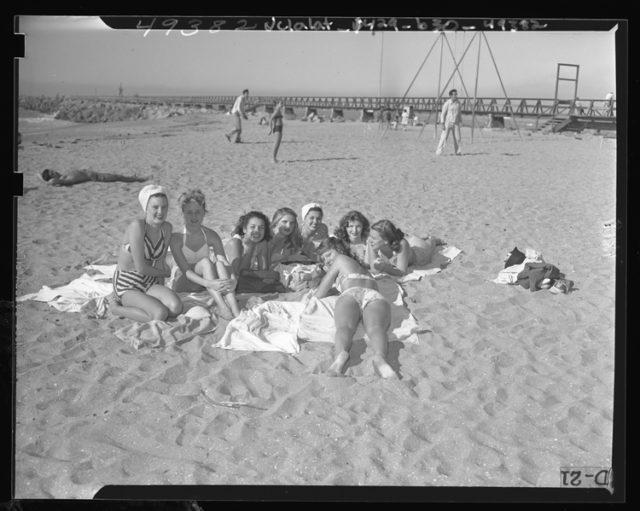
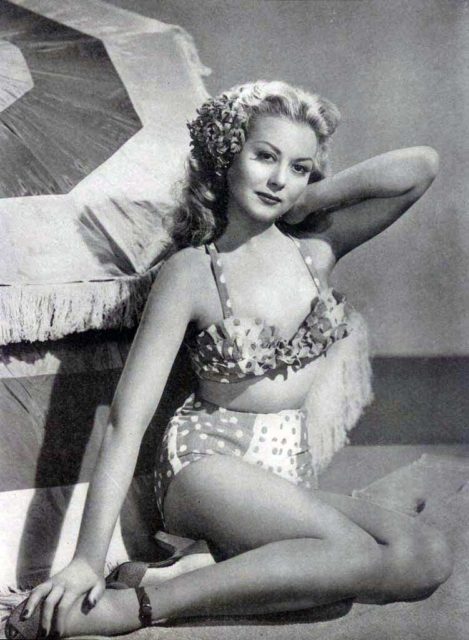
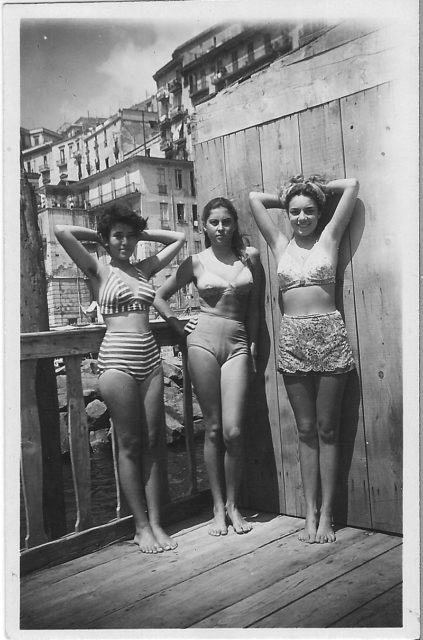
Men’s swimsuits developed roughly in parallel to women’s during this period, with the shorts covering progressively less. Eventually racing-style “speedo” suits became popular—and not just for their speed advantages.
